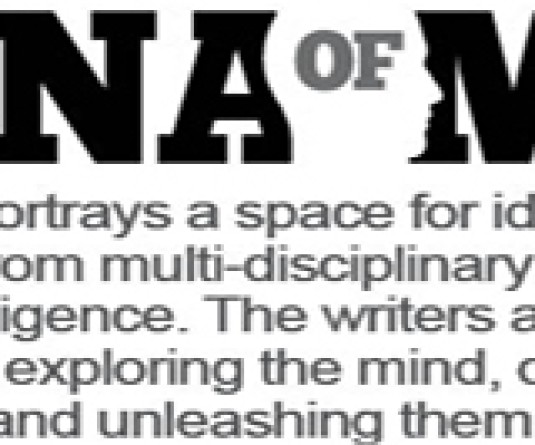
Vemedo Kezo
Department of Education, St. Joseph’s College, Jakhama
PROLOGUE
Every human person is endowed with gifts for the enrichment of his or her personality and to the society. This gift is varied and unique and as unique to the person himself or herself.
Therefore, the goal of education is nurturing and developing this gift of a person to unfold into creative and constructive contribution to the world.
Socrates argues that education is drawing out what is already within the student. The very word of education itself comes from the Latin root word, educere ‘which means to bring out what is within’.
However, in today’s context of formal education, the cognitive aspect is emphasized and the other dimensions of affective and psychomotor domain of a person are sidelined.
This article attempts to highlight how we can nurture different skills and talents of an individual which form as the different intelligences of a person. These different intelligences or multiples intelligences was first theorized by a Harvard University Professor, Howard Gardner in 1983 in his Frames of the Mind: The Theory of Multiple Intelligences. He gives different types of intelligences that an individual has. Through this theory Gardner points out the limits of traditional IQ testing and its application. However, before, discussing the topic, the need to clarify the word intelligence is in order.
CONCEPTUAL CLARIFICATION
The word intelligence comes from the Latin word intelligentia which means understanding or the power of discerning and understanding. The word was popularised by the German Psychologist William L.Stern in 1912 in his research on human reasoning and thus coined the word, intelligenz quotient (I.Q).
In his words, “intelligence is a general capacity of an individual consciously to adjust his thinking to new requirements: it is general mental adaptability to new problems and conditions of life.
In the words of Gardner, it is the ‘ability to solve problems or to create products that are valued within one or more cultural settings.’
Thus we can see that the word intelligence is a complex concept and definition depends upon the vantage point in which we define.
If intelligence is smartness of dealing with the environment we have Howard Gardner who gives various types of intelligences that every human person contributes to his or her survival and relating with the social milieu.
WHAT IS MULTIPLE INTELLIGENCE? Thus Gardner gives the different types of intelligences apart from the traditional attributes of intelligence. Thus the following are the attributes of multiple intelligences.
1. Linguistic Intelligence: This intelligence is related to written and spoken language. They have well developed skills and sensitivity to the sounds, meanings and rhythm of words.
2. Mathematical Intelligence: This intelligence focuses on the ability to reason, calculate and handle logical thinking.
3. Visual intelligence: A person with this type of intelligence has the capacity to think in images and pictures, and visualize accurately and abstractly.
4. Kinaesthetic intelligence: This intelligence is related to physical movement and it is the ability to control body movement and handle objects skilfully.
5. Musical intelligence: This intelligence is related with the ability to produce and appreciate music.
6. Interpersonal intelligence: This intelligence operates primarily through person-to-person relationships and communication.
7. Intrapersonal intelligence: This intelligence relates to inner states of being, self-reflection and inner feelings, values, beliefs and thinking processes.
8. Naturalist intelligence: This intelligence deals with making connections with elements in nature. A person with this gifted can recognize and categorize plants, animals and other objects in nature. According to Gardner, all human beings possess the varying degrees of intelligences. Therefore, a teacher needs to discover, the different learning styles on the students in order to make the teaching learning process, interesting, meaningful and effective.
MULTIPLE INTELLIGENCE AND THE CLASSROOM
The traditional approach of intelligent quotient labels a person by taking into consideration only the mathematical and linguistic intelligences. In this way a person’s intelligence is narrowed down to these two skills. This type of approach of labelling a person’s holistic aptitude is unfair nay it destroys the basic self confidence of a child to blossom his or her potentialities.
The multiple intelligence approach on the other hand, recognizes the gift of a child and tries to nurture and affirms so that the child grows in a healthy positive self image. In this way, students begin to understand how they are intelligent. When students understand the balance of their own aptitude, talents and skills, they begin to manage their own learning, they value their own strengths and they develop a sense of responsibility to grow and learn.
When teachers become sensitive to the different abilities of students in the class, teaching becomes a source of empowering students to learn and become deeply aware of their own strengths.
The students can now foster deep understanding about the essential questions of life, such as, what I can become after my studies in relation to my strengths and skills, how can I live a good life?
MULTIPLE INTELLIGENCE: A NEW PARADIGM FOR TEACHING LEARNING
The word paradigm signifies the pattern or example in which a new set of ideas or concept is based upon for the explanation of a theory. Thus multiple intelligence theory gives a new paradigm of teaching learning experience. In this paradigm of teaching and learning the cognitive aspect of learning is not the sole criterion but all the three aspects of learning: cognitive, affective and psychomotor domains are given equal emphasis.
Drawing a picture, composing a music, writing a story, performing acrobatics etc, all these activities can be a vital door to learning as important as writing and solving mathematics.
In the new paradigm of teaching learning, the teacher is now the builder of the strengths of the students.
Here the teacher is not only giving the information taken from the text book, but facilitating the students to learn in the way they can learn best. The way the children learn depends upon the capacity of the teacher to enhance their learning ability by virtue of affirming their strengths and recognizing their gifts.
EPILOGUE
What is striking in this approach of learning is that, students demonstrate multiple ways of understanding the lesson. And the teacher affirms the talents of the students in maximising the instructional goals. The focus is now to creating more personalized and diversified instructional experiences. Students’ self esteem and self confidence levels rise as learners become aware of their own intrinsic gifts, talents and aptitudes. Each student develops an appreciation of self and also appreciates other’s gift. They are not threatened of one another but value and recognize each others’ talents and unique gifts. The urge to outdo or outsmart the other is not a big issue here anymore because; students learn and discover their own unique intelligences and their own gifts.






